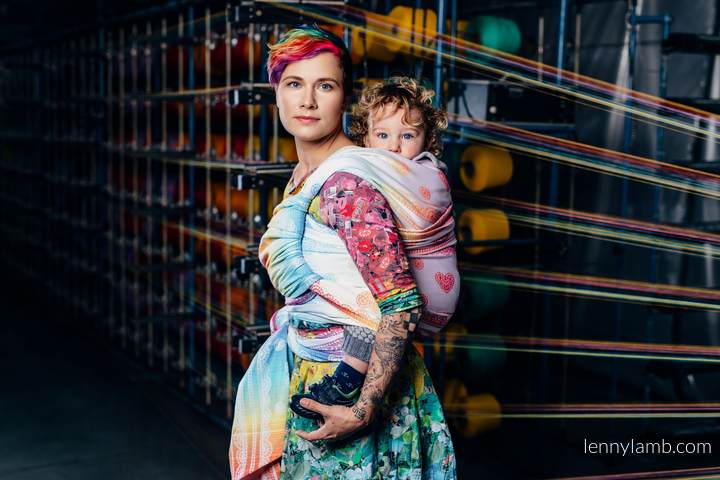



The beginning of babywearing is usually hard. There are many questions and doubts regarding baby’s safety. Is the carry correct from the technical point of view? Is my baby safe? Babywearing is very intuitive - we endeavor to keep our little baby close. But it’s also very important to pay attention to correct positioning for your baby’s health and proper development.
The most important safety rule of babywearing is to make sure your child’s airway remains clear at all times while babywearing in a wrap or a carrier. You should always be able to see your baby’s face by simply glancing down. It’s highly recommended that the fabric doesn’t cover baby’s face. The baby’s chin should be kept off the caregiver’s chest so that the airway remains clear. There should always be space for at least a finger under your baby’s chin.
After securing the safe breathing of the baby, let’s talk about the correct position!
A newborn assumes a specific position. The spine is curved into letter “C”. This specific, kyphotic shape, is natural and physiological for a very small baby. Legs are tucked close to the belly. The reverse bends of the spine (lordosis) come with next steps of the baby’s development. First, lordosis happens when the child can control her/his head and can freely observe the surroundings. Next one is achieved when the baby can sit unassisted (so-called lumbar lordosis). These steps show the readiness of the corpse muscles to overcome the force of gravitation. Although, it seems inconspicuous, the gravitation force can affect the immature spine. That’s why it’s so important to avoid so called verticalization during the daily care, playtime or carrying the baby.
Here comes the question: if we’ve got to avoid the verticalization - why are we carrying the baby in a vertical way? The truth is that even if the position in a wrap is vertical - it has nothing in common with the verticalization: because the legs are bent (with knees slightly higher than the bottom) and slightly spread (for the shoulder’s width). The hips are placed in so-called back-bend. It results in the kyphotisation of the spine - that’s how we achieve the correct position for the immature spine (the fabric plays the role of the “egzo-spine” transferring all the forces to the parent’s body).
Here are the practical conclusions:
The most important thing about carrying your baby (besides psychological aspects) is to keep the correct position of the child with the knees slightly spread and higher than the bottom.
Precise tightening the fabric (strand-by-strand, with a special care for the tension of the upper rail) will secure the safe babywearing
The correct position for children who can sit unassisted: The position of children who can sit unassisted is completely different than described above: the baby rather ‘sits’ in the wrap, with legs more spread and less bent. The back is not curved because the muscles give the stabilization of the corpse and verticalization is a normal process.
Good luck!